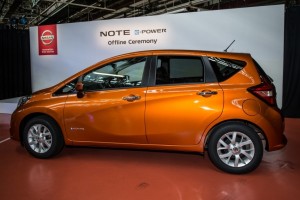
Image via autoevolution
This year marks 20 years since the first hybrid car entered the US market with the Toyota Prius. It is thus, an appropriate time to get a rethink of the original technology that would move us in a cleaner direction. The e-Power version of the Nissan Note fits the bill. This car is neither a pure electric nor a hybrid car. It is in between the two types of vehicles. It is not a kind of hybrid car that has ever been produced in the past. The industry refers to the e-Power as a series hybrid, implying that it can be used for all purposes and intents. The car falls into the electric category because it operates via an electric motor. This motor is responsible for driving the front wheels.
The car also has a three-cylinder, gasoline engine with a capacity of 1.2 liters that serves the role of generating battery charge. The engine does not play any part in driving the wheels, a concept that is entirely new. A comparison between the e-Power and the Nissan Leaf electric car will reveal the uniqueness of this powertrain. The electric motor or e-Power has 40kW, whose potency is half that of Leaf’s. The battery pack of e-Power is a twentieth the Leaf’s size, in a vehicle tipping the scales at 1220 kgs, 109 hp and a torque of 254 Nm are produced. According to Nissan, the vehicle is capable of achieving 80 mpg. Contrary to comparable cars such as BMW i3, Nissan e-Power lacks a plug-in facility.
The model has been tested on the roads surrounding Nissan’s world headquarters and the results are exemplary. Once the starter button is pressed, no sound is produced, just like a typical electric car. Similar to the Leaf, Nissan e-Power provides smooth and instant acceleration. With the engine, motor, and inverter located at the lower side of the chassis, the e-Power experiences minimal body roll, especially in the corners. It has great stability even at highway speeds. Just like the Nissan Leaf, the e-Power’s steering is precise and well-weighted, with a minimal understeer. The working of regenerative brakes is effortless as they play the role of charging the batteries when decelerating. The brake pedal is progressively firm and rigid. Another feature concerning the e-Power is that it is capable of being driven using a single pedal. In D or normal modes, the regenerative brakes of e-Power run almost similarly to a normal gasoline vehicle’s brake feel. According to a commentator, ten years from now, every new vehicle will somehow be electrified.